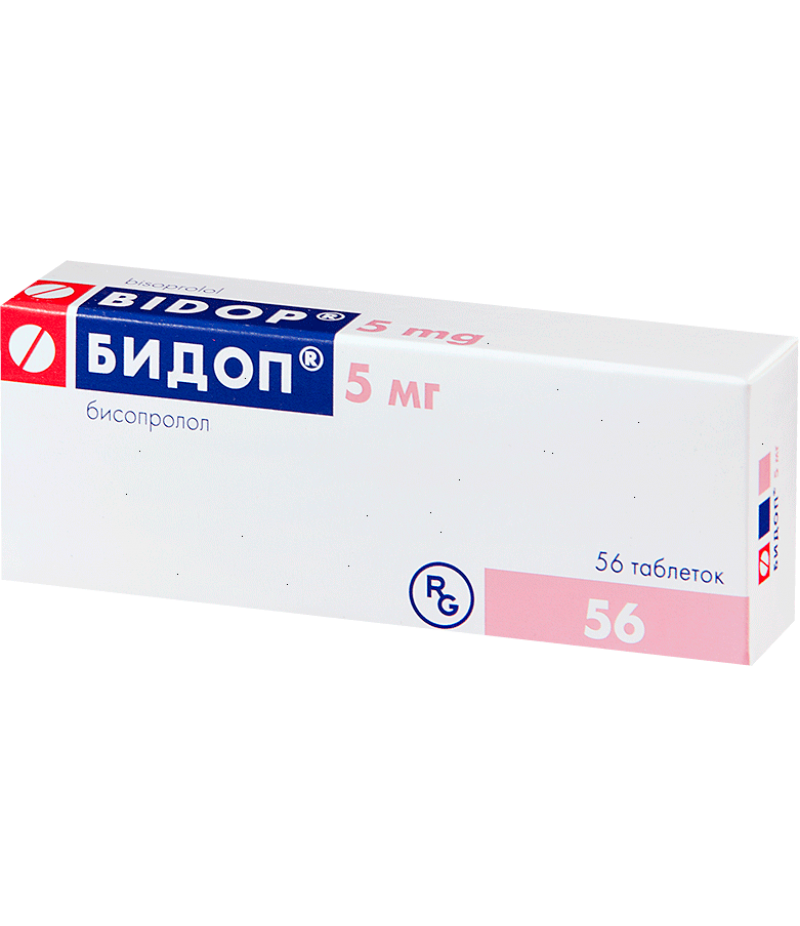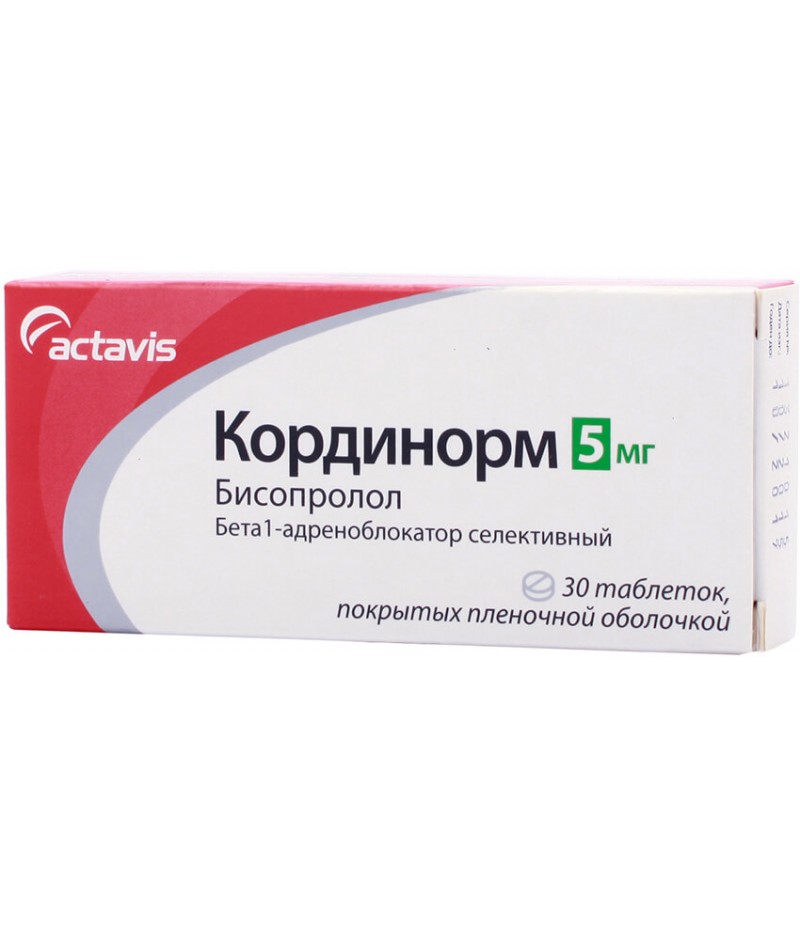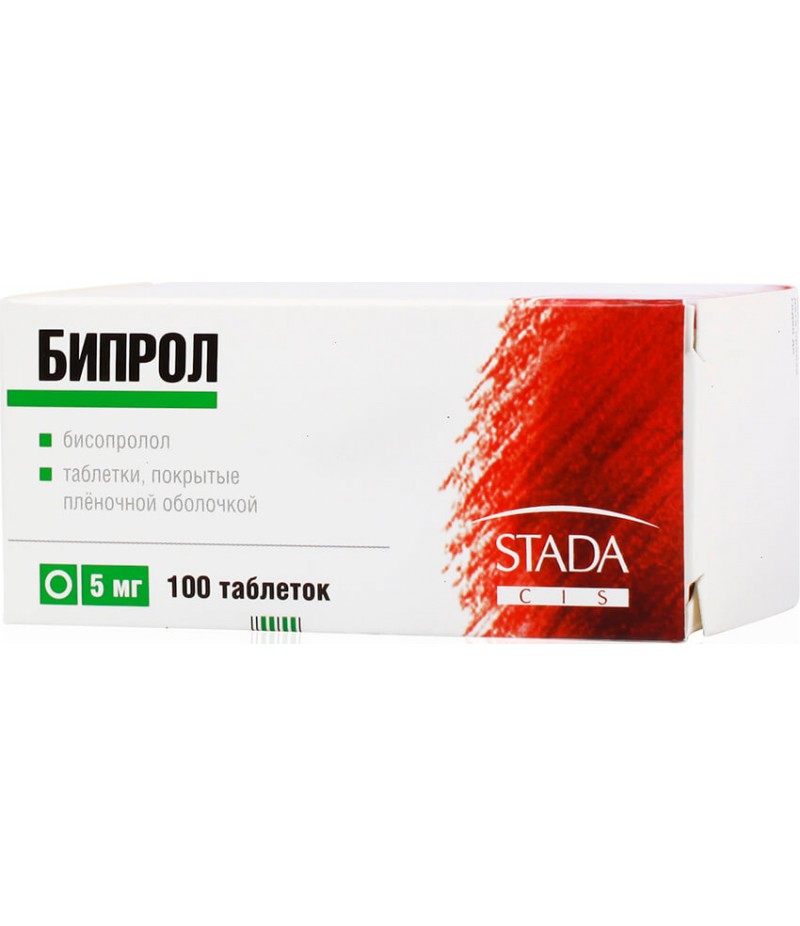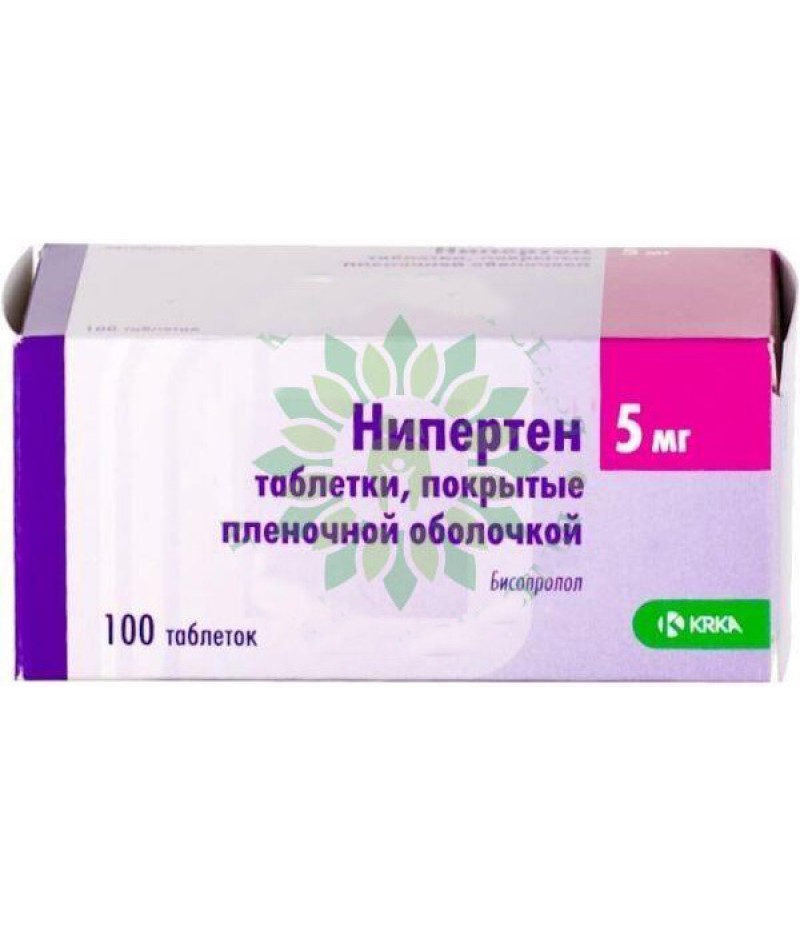Bidop tabs 5mg #56
- $15.14
- 3 or more $14.99
- Availability:Out Of Stock
User manual for BidopYou can buy Bidop hereCompositionOne tablet of Bidop means includes 5 or 10 mg of bisoprolol hemifumarate.Additional substances: crospovidone, lactose monohydrate, magnesium stearate, microcrystalline cellulos..
Tags: tabs
User manual for Bidop
You can buy Bidop here
Composition
One tablet of Bidop means includes 5 or 10 mg of bisoprolol hemifumarate.
Additional substances: crospovidone, lactose monohydrate, magnesium stearate, microcrystalline cellulose, beige pigment.
Form of issue
Light brown biconvex tablets of round shape with markings "B1" and "10" on the surface.
14 tablets in a blister - one, two or four blisters in a cardboard bundle.
pharmachologic effect
Antianginal, antiarrhythmic, hypotensive action
Pharmacodynamics and pharmacokinetics
Pharmacodynamics
Selective β1-adrenoblocker without sympathomimetic action, also has no membrane-stabilizing effect. Reduces the activity of renin, reduces the need for myocardial cells in oxygen, reduces myocardial contractility. Has antianginal, antiarrhythmic, hypotensive effect. Suppressing β1-adrenergic receptors of myocardium in small doses reduces the catecholamine-stimulated synthesis of cAMP from ATP, lowers the intracellular transfer of calcium ions, demonstrates negative dromo-, batmo-, chrono- and inotropic action, inhibits the processes of excitability and conductivity.
When the treatment dose is exceeded, Bidop also has a β2-adrenoblocking effect.
In the initial period of drug use, on the first day, the peripheral resistance of the walls of the vessels increases, after 1-3 days it becomes close to the original, and with prolonged treatment - decreases.
The hypotensive effect is associated with a decrease in the minute volume, sympathetic stimulation of peripheral vessels, a weakening of the renin-angiotensin system, the restoration of feedback in response to a decrease in pressure and influence on the nervous system. With arterial hypertension, the effect develops within 5 days, a sure action - in two months.
Antianginal action is caused by a decrease in the need for myocardial tissue in oxygen due to a decrease in heart rate and a decrease in contractility, an improvement in blood supply to the myocardium, and diastole lengthening. By increasing the diastolic pressure in the ventricles and stretching their muscles, the need for oxygen may be increased.
Antiarrhythmic effect is caused by the elimination of factors causing arrhythmia (tachycardia, increased cAMP concentration, activation of the sympathetic system, arterial hypertension), a decrease in the rate of excitation of pacemakers and inhibition of AV conduction.
When used in moderate therapeutic doses, unlike non-selective beta-blockers, less pronounced acts on organs that have β2-adrenoreceptors (skeletal muscle, pancreas, musculature of peripheral arteries, bronchi and uterus), and does not delay carbohydrate metabolism sodium ions; the strength of atherogenic action is comparable to Propranolol.
Pharmacokinetics
Absorbed by 80-90%, the intake of food for this process does not affect. The maximum concentration in the blood is fixed after 2-3 hours. Reacts with blood proteins by 28-32%. Badly passes through the placenta and the blood-brain barrier. 50% is transformed in the liver with the formation of practically inactive metabolites. The elimination half-life reaches 12 hours. 98% of the remedy is excreted by the kidneys and less than 2% together with bile.
Indications for Bidop application
Below are the indications for the use of Bidop:
prevention of attacks of exacerbation of stable angina pectoris;
arterial hypertension.
Contraindications
collapse;
shock;
acute heart failure;
sinoatrial blockade;
pulmonary edema;
AV-blockade of 2-3 degrees without the presence of an electrostimulator;
chronic decompensated heart failure, requiring
inotropic therapy;
syndrome of weakness of the sinus node;
arterial hypotension;
simultaneous use of MAO inhibitors (excluding MAO B-type);
severe COPD and bronchial asthma;
cardiomegaly without the presence of heart failure;
severe bradycardia;
changes in peripheral circulation at later stages;
pheochromocytoma (without combined use of alpha-blockers);
Raynaud's disease;
metabolic acidosis;
sensitization to the components of the drug or other beta-blockers;
lactose intolerance, lack of lactase, glucose-galactose malabsorption;
age is less than 18 years.
Caution should be used for chronic hepatic or renal failure, myasthenia gravis, diabetes mellitus, thyrotoxicosis, Prinzmetal angina, psoriasis, grade 1 AV block, history of allergies, depression, dieting, and elderly persons.
Side effects
Before you buy Bidop you should know side effects of the drug.
Reactions from sensory organs: dry eyes, decreased salivation, visual impairment, conjunctivitis.
Reactions from the nervous activity: asthenia, fatigue, confusion, dizziness, depression, headache, weakness, anxiety, hallucinations, nightmares, myasthenia gravis, sleep disorders, paresthesia in the extremities, tremors, convulsions.
Reactions on the part of the circulation: orthostatic hypotension, severe pressure decrease, sinus bradycardia, impaired conduction of myocardial tissue, signs of chronic cardiac insufficiency, angiospasm, AV blockade, arrhythmias, decreased myocardial contractility, chest pain.
Reactions from breathing: difficulty breathing when using the drug in high doses or in patients with a predisposition to laryngospasm and bronchospasm, nasal congestion.
Reactions from the digestive side: nausea, dry mouth, vomiting, constipation, abdominal pain, diarrhea, liver disorders, hepatitis, taste distortion, increased liver enzymes, hypertriglyceridemia, hyperbilirubinemia.
Reactions from the hormonal sphere: hypothyroid status, hyperglycemia, hypoglycemia (in persons using insulin).
Dermatological reactions: psoriasis-like reactions, exanthema, skin hyperemia, increased sweating, exacerbation of psoriasis, alopecia.
Reactions from hematopoiesis: agranulocytosis, thrombocytopenia, leukopenia.
Allergic reactions: itching, urticaria, rash.
Other reactions: arthralgia, lumbalia, thoracalgia, decreased potency, weakening of libido, withdrawal syndrome.
Influence on the fetus: hypoglycemia, intrauterine growth retardation, bradycardia.
Instructions for use of Bidod (Method and dosage)
Instructions for use Bidop is identical to the instructions for bisoprolol-containing analogs and prescribes taking the tablets orally, in the morning, without chewing and fasting. The dose is selected by the doctor individually.
In arterial hypertension and to prevent attacks of exacerbation of stable angina pectoris, an initial dose of 5 mg once daily is used. If necessary, increase it to 10 mg with the same periodicity. The greatest daily dose is 20 mg.
In individuals with impaired renal function or with severe impaired liver function, the highest dose is 10 mg per day.
Dose adjustments in patients in old age are not required.
Overdose
Signs of an overdose: ventricular extrasystole, arrhythmia, AV blockade, bradycardia, severe depression of pressure, chronic heart failure, cyanosis of hands, bronchospasm, difficulty breathing, fainting, convulsions, dizziness, hypoglycemia.
Treatment of an overdose: gastric lavage, then reception of enterosorbents, symptomatic treatment.
with AV-blockade appoint up to 2 mg of Atropine or Epinephrine intravenously, it is possible to install a temporary pacemaker;
with extrasystole of the ventricular type, lidocaine is used;
with a decrease in pressure, if there are no symptoms of pulmonary edema, plasmasubstitutional solutions are injected intravenously, if necessary - Dopamine, Epinephrine, Dobutamine;
in case of cardiac insufficiency, diuretics, cardiac glycosides, Glucagon;
when cramps are administered diazepam intravenously;
at bronchospasm, inhaled beta2-adrenostimulants are used.
Interaction
Radiocontrast iodine-containing agents for intravenous administration increase the likelihood of developing anaphylactic-type reactions.
Allergens for immunotherapy, allergen extracts for scarification samples increase the risk of severe allergic reactions of a systemic nature in patients taking bisoprolol.
Phenytoin, when administered intravenously, preparations for inhalation anesthesia increase the strength of Bidod's cardiodepressive action and the likelihood of a drop in pressure.
Bidop is able to mask symptoms of emerging hypoglycemia.
Increases the concentration of lidocaine and xanthines (but not Teofillin) in the blood.
Cardiac glycosides, reserpine, methyldopa, guanfacin, slow calcium channel blockers, Amiodarone and other antiarrhythmic drugs increase the risk of occurrence or aggravation of AV blockade, bradycardia, cardiac arrest.
Diuretics, sympatholytics, Nifedipine, clonidine, hydralazine and other antihypertensives with simultaneous application with Bidop can lead to a strong decrease in pressure.
Lengthens the effect of muscle relaxants nondepolarizing type and anticoagulant effect of coumarin preparations.
Tricyclic and tetracyclic antidepressants, ethanol, antipsychotic, sedative and hypnotic drugs increase the inhibition of nervous activity.
Rifampicin shortens the half-life of bisoprolol.
It is not recommended to share with MAO inhibitors (except B-type MAO), due to significant stimulation of the hypotensive effect. The interruption between treatment with MAO inhibitors and Bidop should be more than 2 weeks.
Ergotamine increases the risk of changes in peripheral circulation.
Sulfasalazine increases the content of bisoprolol in plasma.
Storage conditions
Store in a dry and dark place at room temperature. Keep away from children.
Shelf life - 3 years.
special instructions
During the period of Bidop treatment, care and caution should be exercised when driving vehicles, especially at the beginning of therapy.
Control of persons taking bisoprolol includes the measurement of blood pressure and pulse characteristics (first daily, and then every three months), determination of blood glucose level in diabetic patients (every four months), ECG. In elderly patients, it is recommended that kidney function be monitored once every four months.
Before the start of therapy, it is recommended to perform a diagnosis of respiratory function in persons with a history of pulmonary embolism.
In smoking patients, the effectiveness of beta-blockers decreases.
When used in patients with pheochromocytoma, a risk of paradoxical arterial hypertension is possible.
If necessary, planned surgical intervention of the drug should be canceled 2 days before the start of the general anesthesia.
It is recommended to stop therapy when the patient develops depression.
Do not suddenly interrupt treatment because of the increased risk of developing severe arrhythmias or myocardial infarction.
The drug is canceled gradually, lowering the dose for two weeks or more.
Children
Not applicable to persons under 18 years of age.
In pregnancy and lactation
It is possible to use during pregnancy only if there are strict indications and taking into account all possible risks.
Application during lactation is unacceptable.
Reviews of Bidop
Reviews indicate that the effect of the drug is assessed by patients as sure. Bidop effectively lowers blood pressure and significantly weakens the symptoms of coronary heart disease. However, side effects are comparable in strength to the level of therapeutic effect and are by no means rare. It is also worth remembering that in 20% of patients with angina there is an inefficiency of beta-blockers due to severe coronary atherosclerosis and increased diastolic volume of the left ventricle.




